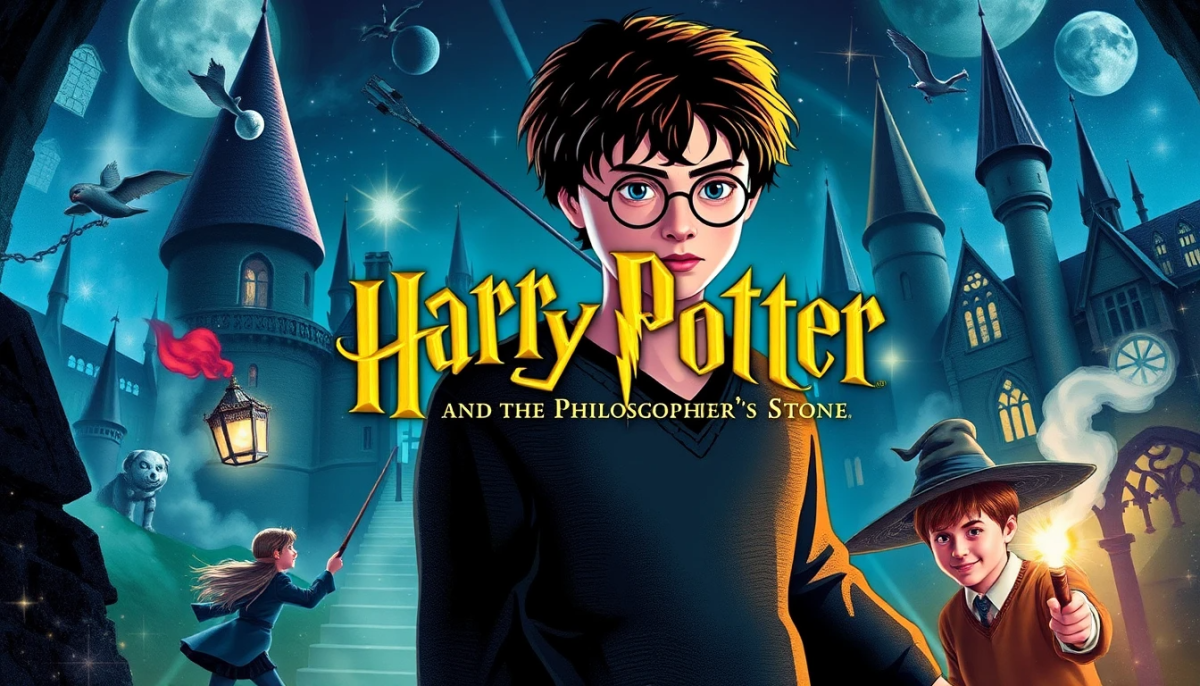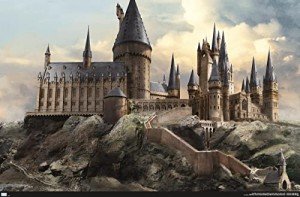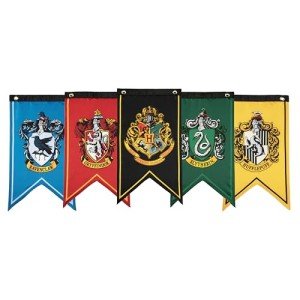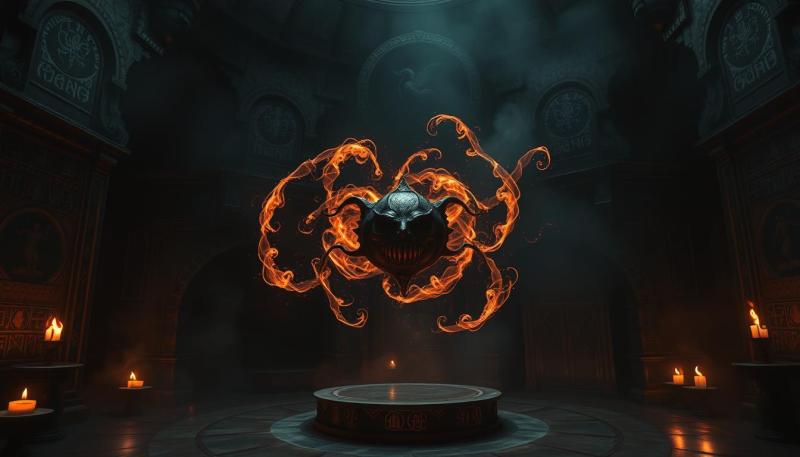Harry Potter and the Philosopher's Stone introduced readers worldwide to a magical universe that would capture imaginations for generations. When young wizard Harry receives his acceptance letter to Hogwarts School of Witchcraft and Wizardry on his eleventh birthday, his ordinary life transforms into an extraordinary adventure. The novel's perfect blend of fantasy, friendship, and coming-of-age themes creates an immersive experience that appeals to readers of all ages.
You might already know the basic plot from the popular film adaptation directed by Chris Columbus, but J.K. Rowling's original text offers deeper character development and richer world-building. As Harry discovers the truth about his parents' mysterious death and confronts the evil threatening the wizarding world, you'll find yourself completely swept up in his journey.
Key Takeaways
- The Philosopher's Stone combines magical elements with relatable characters to create an immersive fantasy world that appeals to readers of all ages.
- Harry's discovery of his magical heritage at Hogwarts serves as both a personal journey and the beginning of a larger adventure against dark forces.
- Rowling's intricate storytelling establishes the foundation for themes of friendship, courage, and identity that develop throughout the series.
The Wizarding World and Its Lore
J.K. Rowling crafted an intricate magical universe in the first Harry Potter book. This world has its own rules, locations, and magical objects that shape the story and characters.
The Enchantment of Hogwarts
Hogwarts School of Witchcraft and Wizardry serves as the primary setting for Harry's adventures. The castle itself is magical, with moving staircases and talking portraits that make navigation both wondrous and challenging for new students.
When you first encounter Hogwarts through Harry's eyes, you witness a place protected by powerful enchantments that make it appear as ruins to non-magical people. These protective spells are part of the wizarding world's separation from Muggles.
The school is divided into four houses: Gryffindor, Hufflepuff, Ravenclaw, and Slytherin. Each has its own common room, traditions, and values that shape students' experiences.
Hagrid, the groundskeeper, introduces Harry to Hogwarts and serves as a friendly guide to this new world. His hut at the edge of the Forbidden Forest represents the boundary between the safety of the school and the dangers lurking beyond.
Fundamentals of Magic and Wizardry
Magic in the Potter universe follows specific rules and requires proper training. You need to understand that wizards and witches use wands as tools to channel their innate magical abilities.
Spells require precise wand movements and correct pronunciation. This explains why Hermione excels while Ron sometimes struggles in classes like Charms and Transfiguration.
Potions, taught by Professor Snape, demonstrate that magic extends beyond wand-waving to include careful preparation of magical ingredients. This subject shows you that patience and precision are as important as raw magical talent.
Magical creatures populate this world, from the gentle unicorns to dangerous trolls. Your understanding of these beings expands alongside Harry's as he encounters them throughout the school year.
Dumbledore, as Headmaster, represents the pinnacle of magical knowledge and power. His wisdom guides students while his abilities protect them from threats both inside and outside the castle walls.
Set of 30 Remastered Printable Daily Newspaper Pages, Wizard and Witch Poster, Wizard Home Decor, Travel Poster, Wizard Wall Art, Halloween
Bring the magic of the wizarding world to your home with these beautifully remastered newspaper pages, perfect for any Harry Potter fan looking to add a touch of enchantment to their decor
Product information
$24.36
Product Review Score
4.42 out of 5 stars
126 reviewsProduct links
The Significance of the Philosopher's Stone
The Philosopher's Stone stands as the central magical object in the first book. This legendary artifact possesses two extraordinary powers: transforming any metal into gold and producing the Elixir of Life.
Nicolas Flamel created the stone and used it to extend his life for centuries. You discover through Harry's adventure that immortality comes with its own cost and complications.
Dumbledore protected the stone at Hogwarts using a series of magical challenges. These tests reveal different aspects of wizardry, from Snape's logic puzzle to Professor Flitwick's enchanted keys.
Voldemort's pursuit of the stone demonstrates the dangerous potential of magical objects when sought for the wrong reasons. His willingness to use others, including Professor Quirrell, shows the corrupting influence of the desire for immortality.
In American editions, the book was retitled "Harry Potter and the Sorcerer's Stone," though the magical object within remains identical in its properties and importance to the plot.
Characters and Relationships
J.K. Rowling introduces readers to a rich cast of characters whose interactions drive the story forward and establish the wizarding world. The connections between these characters reveal themes of friendship, loyalty, and courage that become hallmarks of the series.
Harry Potter: The Boy Who Lived
Harry Potter begins as an orphan living with his cruel relatives, the Dursleys. You'll notice how Harry's mistreatment at their hands shapes his humble character and longing for connection. When Hagrid reveals Harry's true identity as a wizard, his life changes forever.
Harry's parents were murdered by the dark wizard Voldemort, leaving Harry with his iconic lightning scar. This tragic backstory makes Harry famous in the wizarding world as "The Boy Who Lived."
Throughout the book, you'll see Harry develop from an insecure boy into someone who begins to understand his place in this new world. His natural flying ability and brave heart reveal qualities that make him special beyond his famous scar.
Harry's journey of self-discovery forms the emotional core of the story, as he finds a place where he truly belongs.
The Trio: Friendship and Bravery
The friendship between Harry, Ron Weasley, and Hermione Granger forms one of the most important relationships in the book. Each brings different strengths to their trio.
Ron introduces Harry to wizarding culture and provides loyalty and humor. His strategic mind proves valuable during their adventures, particularly in the life-sized chess game.
Hermione's intelligence and dedication to learning save the group numerous times. Her logical thinking and extensive knowledge balance Ron's instinctual approach and Harry's courage.
You'll witness how their friendship develops through shared dangers and adventures. From battling a mountain troll to solving magical puzzles, these experiences strengthen their bond.
Their relationship demonstrates how friendship can overcome challenges that would be impossible to face alone. This trio represents the power of cooperation and mutual respect.
Hermione Granger Inspired Throw Pillow - Harry Potter
Add a touch of magic to your home with this cozy pillow inspired by Hermione's enchanting style
Product information
$23.99
Product Review Score
4.84 out of 5 stars
141 reviewsProduct links
Allies and Antagonists
Albus Dumbledore, Hogwarts' wise headmaster, serves as Harry's mentor and protector. You'll see him guide Harry subtly while allowing him to make his own discoveries and choices.
Professor Snape presents a complex character whose apparent hatred for Harry creates tension throughout the story. His motivations remain mysterious, making you question where his true loyalties lie.
Draco Malfoy emerges as Harry's school rival, representing prejudice against non-pure-blood wizards. His antagonism toward Harry reflects larger conflicts in the wizarding world.
Other notable allies include Hagrid, whose kindness first welcomes Harry to the magical world, and Professor McGonagall, whose stern exterior hides genuine concern for her students.
The character dynamics create a rich tapestry of relationships that drive the plot forward and establish foundations for the entire series.
Elements of Storytelling
J.K. Rowling masterfully weaves various storytelling elements in Harry Potter and the Philosopher's Stone that captivate readers of all ages. The novel combines compelling character development with a carefully constructed plot structure.

A Journey Through Mystery and Adventure
Harry Potter's first year at Hogwarts takes you through a perfectly crafted story structure that balances mystery and adventure. The narrative begins in the ordinary world before Harry discovers his wizard identity, creating a classic "call to adventure" moment.
As you follow Harry, you experience the gradual unveiling of clues about the Philosopher's Stone. Rowling creates tension through:
- Hidden challenges (the three-headed dog, Devil's Snare)
- Mysterious characters (Professor Snape, Quirrell)
- Unexplained events (unicorn killings, break-ins)
The plot elements build toward the climactic confrontation with Voldemort. This journey captivates young readers through its balance of danger and discovery, making the adventure feel both thrilling and accessible.
Themes and Symbolism
The novel explores themes of friendship, bravery, and self-discovery that resonate deeply with readers. You can see how Rowling uses symbolism throughout to reinforce these ideas.
The Mirror of Erised represents desire and self-knowledge. When Harry sees his family in the mirror, you witness his longing for connection and identity. Dumbledore's warning about the mirror teaches an important lesson about living in reality rather than dreams.
Other symbolic elements include:
- The Sorting Hat - identity and personal choice
- Hogwarts Houses - different human virtues and traits
- The Stone itself - immortality and its moral costs
The themes work on multiple levels. Young readers enjoy the adventure, while older readers appreciate the deeper meanings. This layered approach is why the book became so famous and beloved across generations.









